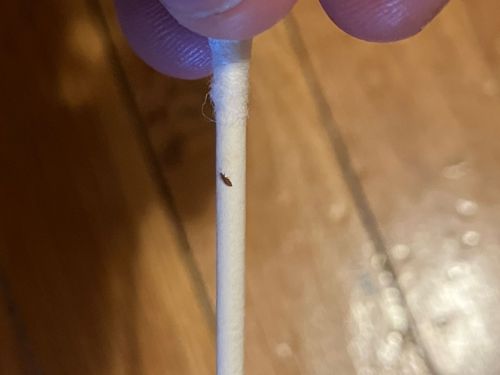Booklouse
Scientific Name: Liposcelis spp. (a common genus)
Order & Family: Psocodea, Liposcelididae
Size: 0.5 mm to 2 mm

Natural Habitat
Damp, warm, and dark places. Found in old books, stored papers, food storage areas, under wallpaper, and in other areas with mold growth.
Diet & Feeding
Fungi, mold, starch-based materials (book bindings, wallpaper paste), dead insects, and cereal products.
Behavior Patterns
Nocturnal and reclusive, often found in large numbers. Pterygota (winged booklice) are able to fly and are attracted to light sources. They prefer high humidity environments. Nymphs hatch from eggs and undergo several instars before reaching adulthood.
Risks & Benefits
Potential risks: Can damage books, papers, and other starch-rich materials. Can contaminate stored food products. Generally not harmful to humans directly, but high populations can sometimes trigger allergies or skin irritations in sensitive individuals. No known benefits, primarily considered a nuisance or pest.
Identified on: 9/17/2025